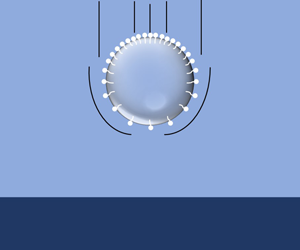Published online by Cambridge University Press: 05 February 2021

Sedimentation of drops has been widely investigated, although a relatively small number of studies have accounted for the presence of a bounding wall, presumably because of the associated analytical difficulties. In addition, these drops almost always contain impurities in the form of surfactants, which alter the interfacial properties, thereby changing the flow characteristics and the settling dynamics. Therefore, a more physically accurate description of settling should account for both the presence of a bounding wall as well as surfactants, a paradigm that remains poorly addressed. As such, here we analyse the effect of surfactants on a drop settling towards a solid wall in the limit of small deformation. We only account for the interfacial transport of the surface impurities and use bipolar coordinates to represent the fluid motion. Assuming the surfactant transport to be diffusion dominated, asymptotic solutions for the velocity field are derived and are subsequently used to analyse the settling dynamics and deformation of the drop. We show that the surfactants slow down the drop and may either augment or reduce the deformation by a small amount depending on the location of the drop. The effect of surfactant becomes most prominent near the wall, wherein the drop experiences the largest hydrodynamic drag. The changing flow patterns caused by the wall also redistributes the surfactant around the interface, resulting in asymmetric depletion and accumulation near the poles. Our results might have potential significance in areas such as separation processes as well as droplet based microfluidics.